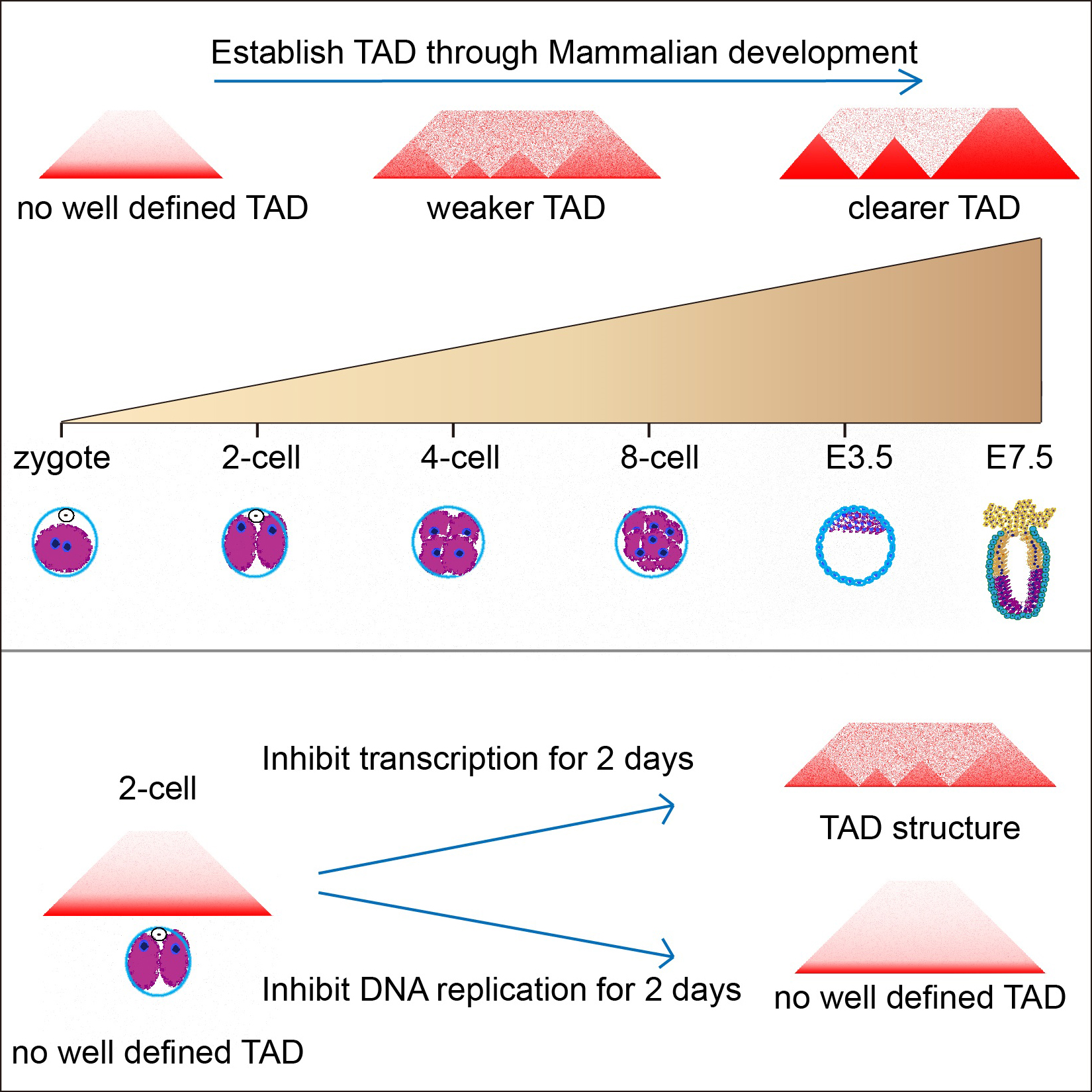The linear length of human DNA is about 2 meters. However, the nucleus size of normal human cell is only about 5~10 micrometers. Therefore, the DNA must be properly folded in the nucleus. For most of animals including human, the life starts from the fertilization of sperm and oocytes. But the nucleus of sperm and oocyte are very special. Mammalian sperm DNA are packed with protamine, and the size of sperm nucleus is about 1/10 of normal cell nucleus. And mature oocyte is paused at metaphase II state. Oocyte DNA is also highly densely packed. Until now, it remains unknown how the DNA is reorganized to become a loose state during embryo development. Addressing this question can help us to understand the development process from a zygote to an adult. Their work provided a valuable data resource for the study of mammalian embryonic development. 3D Chromatin Structures of Mature Gametes and Structural Reprogramming during Mammalian Embryogenesis (Image by LIU Jiang's group) Contact: Prof. LIU Jiang Email: liuj@big.ac.cn CAS Key Laboratory of Genome Sciences & Information
Dr. LIU Jiang’ lab from Beijing Institute of Genomics (BIG) of Chinese Academy of Sciences and Dr. HUANG Xingxu’s lab from School of Life Science and Technology of ShanghaiTech University revealed the global reprogramming of 3D chromatin structures from mammalian gametes to early embryos. The related study was published in Cell.
The scientists optimized in situ Hi-C experiments by using a small number of cells to generate high resolution chromatin structures for mouse sperm, MII phase oocytes, zygotes at the PN4 stage, and early embryos at the 2-cell, 4-cell, 8-cell, E3.5 and E7.5 stages. They find that mature oocytes at the metaphase II stage do not have topologically associated domains (TADs). And in sperm, extra-long-range interactions (>4 megabases) and interchromosomal interactions occur frequently. They find the high-order structures of both the paternal and maternal genomes in zygotes and 2-cell embryos are obscure, but are gradually re-established through development. In addition, they demonstrate the establishment of the TAD structure requires DNA replication, but not zygotic genome activation.
This research was supported by grants from CAS funding, NSFC and The National Key R&D Program.
